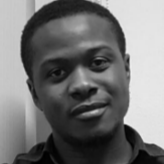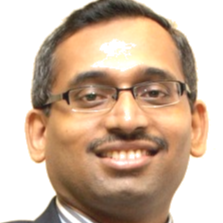International Journal of Information Technology and Computer Science (IJITCS)
IJITCS Vol. 8, No. 12, 8 Dec. 2016
Cover page and Table of Contents: PDF (size: 560KB)
Usability Evaluation Criteria for Internet of Things
Full Text (PDF, 560KB), PP.10-18
Views: 0 Downloads: 0
Author(s)
Index Terms
Internet of Things (IoT), Usability evaluation, Devices, Quality, Systems
Abstract
The field of usability, user experience (UX) design and human-computer interaction (HCI) arose in the realm of desktop computers and applications. The current experience in computing has radically evolved into ubiquitous computing over the preceding years. Interactions these days take place on different devices: mobile phones, e-readers and smart TVs, amid numerous smart devices. The use of one service across multiple devices is, at present, common with different form factors. Academic researchers are still trying to figure out the best design techniques for new devices and experiences. The Internet of Things (IoT) is growing, with an ever wider range of daily objects acquiring connectivity, sensing ability and increased computing power. Designing for IoT raises a lot of challenges; the obvious difference being the much wider variety of device form factors. IoT is still a technically driven field, thus the usability of many of IoT products is, in some way, of the level anticipated of mature consumer products. This study focuses on proposing a usability evaluation criterion for the generic IoT architecture and essential technological components.
Cite This Paper
Michael Onuoha Thomas, Beverly Amunga Onyimbo, Rajasvaran Logeswaran, "Usability Evaluation Criteria for Internet of Things", International Journal of Information Technology and Computer Science(IJITCS), Vol.8, No.12, pp.10-18, 2016. DOI:10.5815/ijitcs.2016.12.02
Reference
[1]A. J. Choi, “Internet of Things : Evolution towards a Hyper- Connected Society,” 2014.
[2]R. Baharuddin, D. Singh, and R. Razali, “Usability dimensions for mobile applications-a review,” Res. J. Appl. Sci. Eng. Technol., vol. 5, no. 6, pp. 2225–2231, 2013.
[3]R. Yáñez Gómez, D. Cascado Caballero, and J.-L. Sevillano, “Heuristic evaluation on mobile interfaces: a new checklist.,” ScientificWorldJournal., vol. 2014, pp. 1–20, 2014.
[4]R. D. Sriram and A. Sheth, “Internet of Things Perspectives,” IT Prof., vol. 17, no. 3, pp. 60–63, 2015.
[5]J. Gubbi, R. Buyya, S. Marusic, and M. Palaniswami, “Internet of Things (IoT): A vision, architectural elements, and future directions,” Futur. Gener. Comput. Syst., vol. 29, no. 7, pp. 1645–1660, 2013.
[6]R. Baharuddin, D. Singh, and R. Razali, “Usability dimensions for mobile applications-a review,” Res. J. Appl. Sci. Eng. Technol., vol. 5, no. 6, pp. 2225–2231, 2013.
[7]L. Atzori, A. Iera, and G. Morabito, “The Internet of Things: A survey,” Comput. Networks, vol. 54, no. 15, pp. 2787–2805, 2010.
[8]D. Miorandi, S. Sicari, F. De Pellegrini, and I. Chlamtac, “Internet of things: Vision, applications and research challenges,” Ad Hoc Networks, vol. 10, no. 7, pp. 1497–1516, 2012.
[9]T. Frühwirth, L. Krammer, and W. Kastner, “Dependability demands and state of the art in the internet of things,” IEEE Int. Conf. Emerg. Technol. Fact. Autom. ETFA, vol. 2015-Octob, 2015.
[10]P. Martin and K. Brohman, “CLOUDQUAL: A Quality Model for Cloud Services,” IEEE Trans. Ind. Informatics, vol. 10, no. 2, pp. 1527–1536, 2014.
[11]I. Lee and K. Lee, “The Internet of Things (IoT): Applications, investments, and challenges for enterprises,” Bus. Horiz., vol. 58, no. 4, pp. 431–440, 2015.
[12]A. Botta, W. de Donato, V. Persico, and A. Pescapé, “Integration of Cloud computing and Internet of Things: A survey,” Futur. Gener. Comput. Syst., vol. 56, pp. 684–700, 2014.
[13]R. Khan, S. U. Khan, R. Zaheer, and S. Khan, “Future internet: The internet of things architecture, possible applications and key challenges,” Proc. - 10th Int. Conf. Front. Inf. Technol. FIT 2012, pp. 257–260, 2012.
[14]L. Yong-Fei and T. Li-Qin, “Comprehensive Evaluation Method of Reliability of Internet of Things,” 2014 Ninth Int. Conf. P2P, Parallel, Grid, Cloud Internet Comput., pp. 262–266, 2014.
[15]L. Coetzee and J. Eksteen, “The Internet of Things – Promise for the Future? An Introduction,” Conf. Proc., pp. 978–1, 2011.
[16]Z. Liu, A. Zhang, and S. Li, “Vehicle anti-theft tracking system based on Internet of things,” Proc. 2013 IEEE Int. Conf. Veh. Electron. Saf., pp. 48–52, 2013.
[17]I. M. Almomani, N. Y. Alkhalil, E. M. Ahmad, and R. M. Jodeh, “Ubiquitous GPS vehicle tracking and management system,” 2011 IEEE Jordan Conf. Appl. Electr. Eng. Comput. Technol. AEECT 2011, 2011.
[18]C. Rahmani, A. Azadmanesh, and H. Siy, “Architecture-Based Reliability Modeling of Web Services Using Petri Nets,” 2010 IEEE 12th Int. Symp. High Assur. Syst. Eng., pp. 164–165, 2010.
[19]A. W. Burange and H. D. Misalkar, “Review of Internet of Things in development of smart cities with data management & privacy,” Conf. Proceeding - 2015 Int. Conf. Adv. Comput. Eng. Appl. ICACEA 2015, pp. 189–195, 2015.
[20]M. De Sanctis, E. Cianca, G. Araniti, I. Bisio, and R. Prasad, “Internet of Remote Things,” vol. 3, no. 1, pp. 113–123, 2016.
[21]L. Tan, “Future internet: The Internet of Things,” 2010 3rd Int. Conf. Adv. Comput. Theory Eng., pp. V5–376–V5–380, 2010.
[22]S. Bin, Z. Guiqing, W. Shaolin, and W. Dong, “The development of management system for Building Equipment Internet of Things,” 2011 IEEE 3rd Int. Conf. Commun. Softw. Networks, pp. 423–427, 2011.
[23]W. Pollard, “Internet of Things EUROPEAN R ESEARCH C LUSTER ON THE INTERNET OF THINGS,” 2015.
[24]J. Rui and S. Danpeng, “Architecture Design of the Internet of Things Based on Cloud Computing,” 2015 Seventh Int. Conf. Meas. Technol. Mechatronics Autom., pp. 206–209, 2015.
[25]S. Frost, “Internet of Things,” vol. 07, 2015.
[26]X. Li, R. Lu, X. Liang, X. Shen, J. Chen, and X. Lin, “Smart community: An internet of things application,” IEEE Commun. Mag., vol. 49, no. 11, pp. 68–75, 2011.
[27]A. Mihailovic, M. Simeunovi, N. Leki, and M. Pejanovi, “A strategy for deploying diverse sensor-based networks as an evolution towards integrated Internet of Things and Future Internet,” pp. 23–26, 2014.
[28]J. Zhou, T. Leppanen, E. Harjula, M. Ylianttila, T. Ojala, C. Yu, and H. Jin, “CloudThings: A common architecture for integrating the Internet of Things with Cloud Computing,” Proc. 2013 IEEE 17th Int. Conf. Comput. Support. Coop. Work Des. CSCWD 2013, pp. 651–657, 2013.
[29]M. I. Alam, M. Pandey, and S. S. Rautaray, “A Comprehensive Survey on Cloud Computing,” I.J. Inf. Technol. Comput. Sci. Inf. Technol. Comput. Sci., vol. 02, no. 02, pp. 68–79, 2015.
[30]T. Liu, “Application of Cloud Computing in the Emergency Scheduling Architecture of the Internet of Things,” 2015.
[31]T. Y. Wu, G. H. Liaw, S. W. Huang, W. T. Lee, and C. C. Wu, “A GA-based mobile RFID localization scheme for internet of things,” Pers. Ubiquitous Comput., vol. 16, no. 3, pp. 245–258, 2012.
[32]N. Bevan, “Measuring usability as quality of use,” Softw. Qual. J., vol. 4, no. 2, pp. 115–130, 1995.
[33]N. Zeni and L. Mich, “Usability issues for systems supporting requirements extraction from legal documents,” 2014 IEEE 7th International Workshop on Requirements Engineering and Law, RELAW 2014 - Proceedings, 2014. .
[34]C. Eliasson, M. Fiedler, and I. Jørstad, “A criteria-based evaluation framework for authentication schemes in IMS,” Proc. - Int. Conf. Availability, Reliab. Secur. ARES 2009, pp. 865–869, 2009.
[35]O. Gioug, K. Dooyeon, K. Sangil, and R. Sungyul, “A quality evaluation technique of RFID middleware in ubiquitous computing,” Proc. - 2006 Int. Conf. Hybrid Inf. Technol. ICHIT 2006, vol. 2, pp. 730–735, 2006.
[36]V. Nassar, “Common criteria for usability review,” Work, vol. 41, no. SUPPL.1, pp. 1053–1057, 2012.
[37]U. O. Nwokedi, B. A. Onyimbo, and B. B. Rad, “Usability and Security in User Interface Design: A Systematic Literature Review,” Int. J. Inf. Technol. Comput. Sci., vol. 8, no. 5, pp. 72–80, 2016.
[38]T. Jokela, “Assessments of usability engineering processes: experiences from experiments,” 36th Annu. Hawaii Int. Conf. Syst. Sci. 2003. Proc., p. 9 pp., 2003.
[39]C. Prehofer, “From the internet of things to trusted apps for things,” Proc. - 2013 IEEE Int. Conf. Green Comput. Commun. IEEE Internet Things IEEE Cyber, Phys. Soc. Comput. GreenCom-iThings-CPSCom 2013, pp. 2037–2042, 2013.
[40]N. Maalel, E. Natalizio, A. Bouabdallah, P. Roux, and M. Kellil, “Reliability for emergency applications in internet of things,” Proc. - IEEE Int. Conf. Distrib. Comput. Sens. Syst. DCoSS 2013, pp. 361–366, 2013.
[41]N. Nikmehr, “Content y Usability,” pp. 347–351, 2008.
[42]S. Jimenez-Fernandez, P. De Toledo, and F. Del Pozo, “Usability and interoperability in wireless sensor networks for patient telemonitoring in chronic disease management,” IEEE Trans. Biomed. Eng., vol. 60, no. 12, pp. 3331–3339, 2013.
[43]R. A. Canessane and S. Srinivasan, “A Frameworkfor Analysing the System Quality,” pp. 1111–1115, 2013.
[44]I. Lee and K. Lee, “The Internet of Things (IoT): Applications, investments, and challenges for enterprises,” Bus. Horiz., vol. 58, no. 4, pp. 431–440, 2015.
[45]A. J. Jara, Y. Bocchi, and D. Genoud, “Social internet of things: The potential of the internet of things for defining human behaviours,” Proc. - 2014 Int. Conf. Intell. Netw. Collab. Syst. IEEE INCoS 2014, pp. 581–585, 2015.
[46]P. Patel, A. Pathak, T. Teixeira, Val, #233, and R. Issarny, “Towards application development for the internet of things,” Proc. 8th Middlew. Dr. Symp., pp. 1–6, 2011.
[47]J. Kim and J.-W. Lee, “OpenIoT: An open service framework for the Internet of Things,” 2014 IEEE World Forum Internet Things, pp. 89–93, 2014.
[48]W. Zhang, “Study about IOT ’ s Application in ‘ Digital Agriculture ’ Construction,” Inf. Sci. (Ny)., pp. 2578–2581, 2011.
[49]Y. Xu, Y. Wang, X. Gao, and S. Zhang, “Product Development Process Improvement Approach Based on Benchmarking,” Electronics, pp. 1–4, 2010.
[50]M. H. Abdallah, “A quality assurance model for an information system development life cycle,” Int. J. Qual. Reliab. Manag., vol. 13, no. 7, pp. 23–35, 1996.
[51]L. Yong-Fei and T. Li-Qin, “Comprehensive Evaluation Method of Reliability of Internet of Things,” 2014 Ninth Int. Conf. P2P, Parallel, Grid, Cloud Internet Comput., pp. 262–266, 2014.
[52]S. Thomas, G.E, “Dual RFID-ZigBee Sensor enable NFC application for internet of things,” 2012. [Online]. Available: http://www.electronics-sourcing.com/2012/03/28/dual-rfid-zigbee-sensors-enable-nfc-applications-for-the-internet-of-things/.


